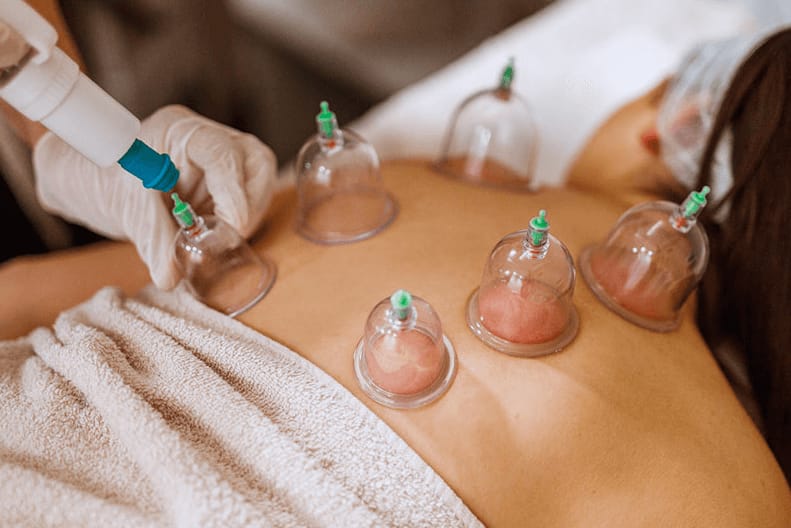- Thriving Guide
- Posts
- Is Cupping Therapy Right for You? Here’s What to Know
Is Cupping Therapy Right for You? Here’s What to Know
An ancient practice that may relieve pain, improve circulation, and support healing here’s what to consider before trying it.

Cupping therapy has been used for thousands of years to relieve pain, reduce inflammation, and improve circulation. Once seen mainly in traditional Middle Eastern and Chinese medicine, it has gained modern popularity especially after Olympic athletes displayed its distinctive round marks. This noninvasive treatment is believed to boost blood flow, support the immune system, and enhance recovery.
What Is Cupping Therapy?
Cupping involves placing small cups on the skin to create suction. These cups often made of glass, silicone, bamboo, or ceramic gently pull the skin and underlying tissues upward. This suction effect:
Increases blood circulation
Encourages lymphatic drainage
Helps relax muscles and connective tissue
May stimulate the body’s natural healing process
In traditional Chinese medicine, cupping is thought to restore the flow of energy (qi) and open pores to release tension. It's often paired with acupuncture or massage therapy.
Types of Cupping
There are several methods, each with unique benefits:
Dry cupping: Cups are placed with static suction, often for 5–20 minutes.
Massage cupping: Cups are moved along the skin with gentle suction for a massage-like effect.
Flash cupping: Quick, light suctions ideal for children or those sensitive to strong suction.
Wet cupping: Small punctures are made on the skin before applying cups. This method is more invasive and carries higher risks.
Needle or laser cupping: Combines cupping with acupuncture or low-level laser therapy.
Magnetic or electrical cupping: Uses magnets or mild electrical currents to enhance muscle relief.
Who Should Avoid Cupping?
While cupping is safe for many, certain individuals should avoid it, including:
Children under 4 and frail older adults
Pregnant individuals (especially on the abdomen or lower back)
Those on blood thinners or with clotting disorders
People with active skin infections, wounds, or severe eczema
Individuals with serious conditions like cancer, organ failure, or unmanaged stroke recovery
Potential Benefits
Cupping therapy may help with:
Chronic back or neck pain – Studies suggest cupping can improve mobility and reduce discomfort.
Fibromyalgia symptoms – When paired with other treatments, cupping has been shown to reduce pain intensity.
Carpal tunnel syndrome – It may ease numbness and tingling.
Migraine relief – Some research indicates wet cupping can help lower pain levels.
Menstrual discomfort – It may decrease heavy menstrual flow and cramping.
A 2021 review found that cupping could improve quality of life for individuals with chronic pain when combined with conventional therapy.
Side Effects
Cupping can leave temporary red or purple marks—caused by increased blood flow beneath the skin. Other mild side effects may include:
Redness or swelling
Lightheadedness or dizziness
Bruising that fades within a week
Rare side effects include infections, scarring, or severe bruising if not performed correctly. Always choose a certified practitioner who follows proper hygiene and sterilization protocols.
What to Expect During a Session
A typical cupping session lasts 10–30 minutes. The process generally includes:
Cleaning and disinfecting the skin.
Placing and heating or suctioning cups to create negative pressure.
Leaving cups in place or gliding them along the muscles.
Removing the cups and gently massaging the area afterward.
Most people report a warm, stretching sensation rather than pain.
Is Cupping Right for You?
Cupping can be a helpful complementary therapy but should not replace conventional medical care. If you have chronic pain, migraines, or tension-related discomfort, you might find short-term relief from regular cupping sessions.
Share this article or subscribe to our newsletter for more wellness insights.